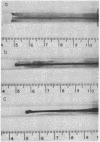Abstract
A constant infusion, indicator dilution technique for blood flow measurements in the forearm and hand of man was tested and validated in vitro and in vivo. This technique employs jet injection to improve mixing of indicator with arterial blood. The mixing characteristics of the jet injection system were studied in vitro in tubing simulating the brachial artery of man. In addition, actual blood flows in the isolated pump-perfused forelimbs of five dogs were compared with constant infusion, indicator dilution calculated flows. Measurements were also made of mixing and of blood flow in the forearm and hand of man. The technique was used to compare forearm and hand vascular responses with constant intrabrachial arterial infusions of magnesium sulfate in 13 normotensive and 13 essential hypertensive men.
In vitro and in vivo the jet injection system significantly improved mixing of indicator with blood, as compared with mixing produced by standard infusion techniques, without causing hemolysis. In 30 measurements in isolated, perfused dog forelimbs the correlation coefficient between actual and calculated blood flow was 0.992. Resting limb vascular resistance in the hypertensive group was significantly higher than in the normotensive group. Limb vascular resistance in all 26 men decreased in response to intrabrachial-arterial infusion of 0.25% magnesium sulfate (8 ml/min). Rate of infusion of Mg++ was 0.162 mEq/min. There was a significant positive linear correlation between level of initial limb vascular resistance and magnitude of response to magnesium sulfate. Vascular response data adjusted for this source of variation were similar in hypertensives and normotensives.
The data suggest that this constant infusion, indicator dilution technique allows accurate calculation of total limb blood flow in man, provided that anomalous bifurcation of the brachial artery is not present. The data also suggest that the jet injection system improves mixing of substances with arterial blood. Thus, use of this system should especially aid reliability of studies of limb vascular responses to vasoactive agents infused into the brachial artery.
Full text
PDF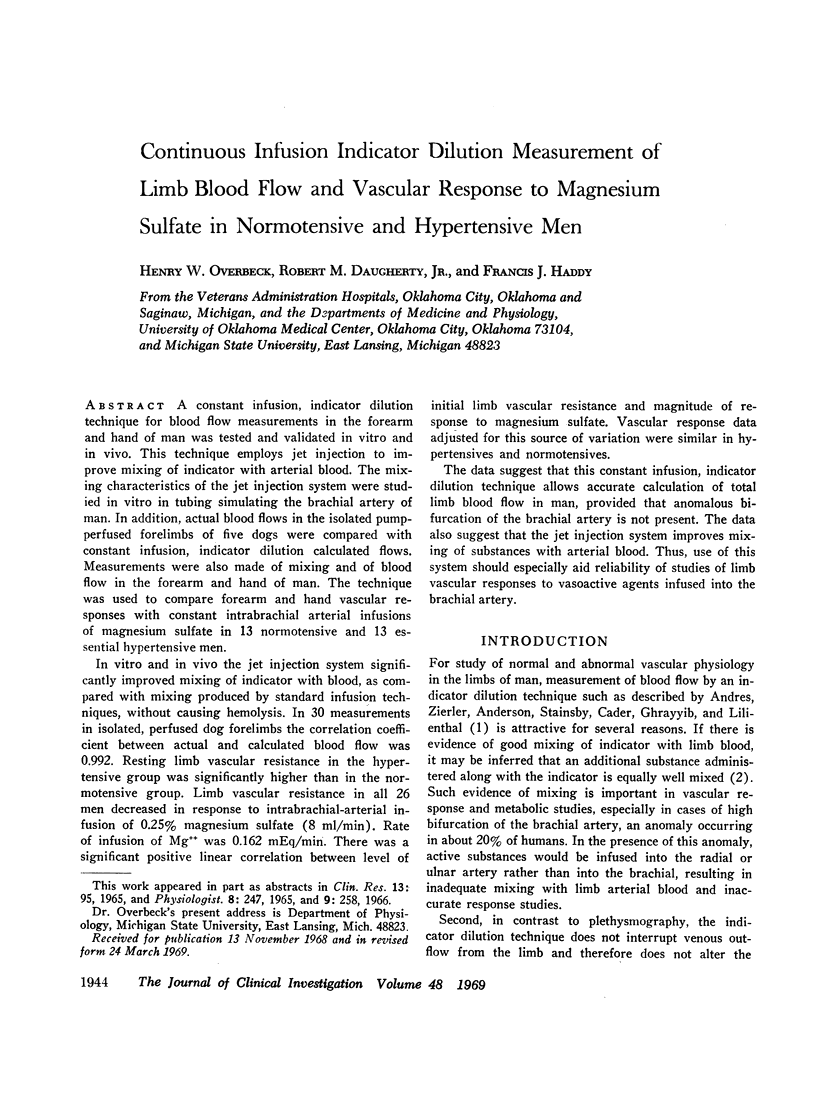
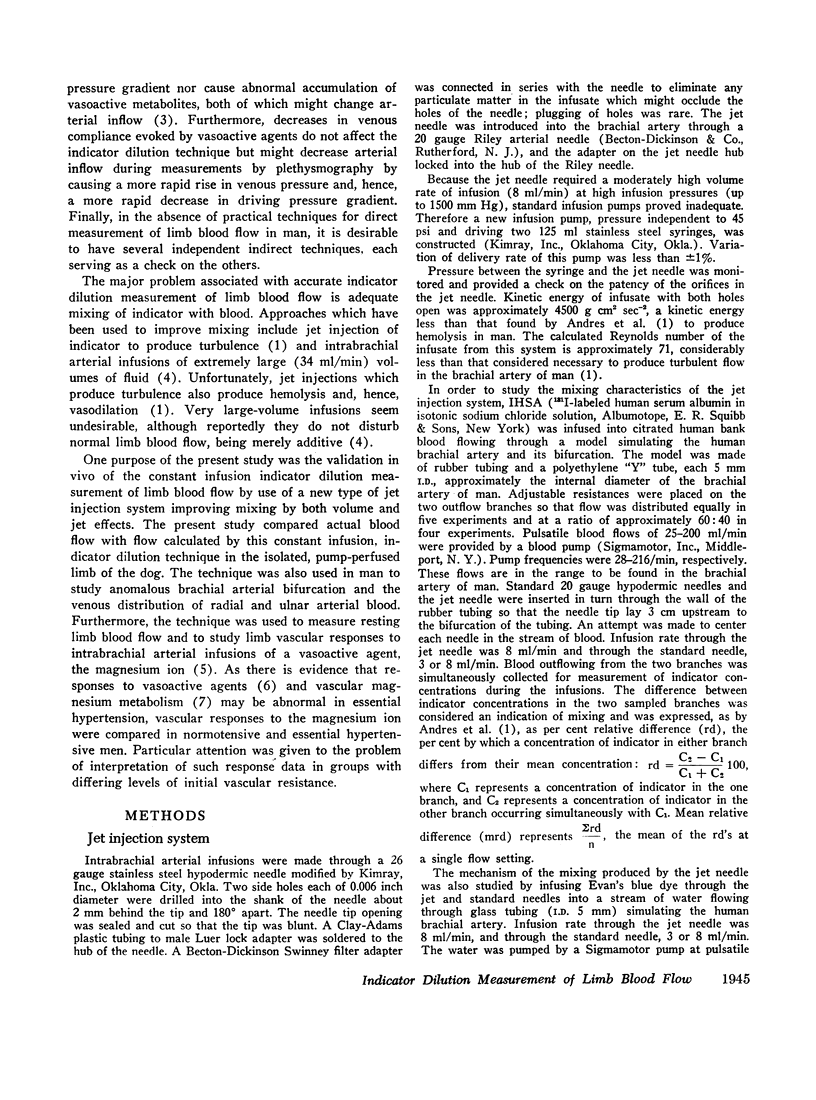
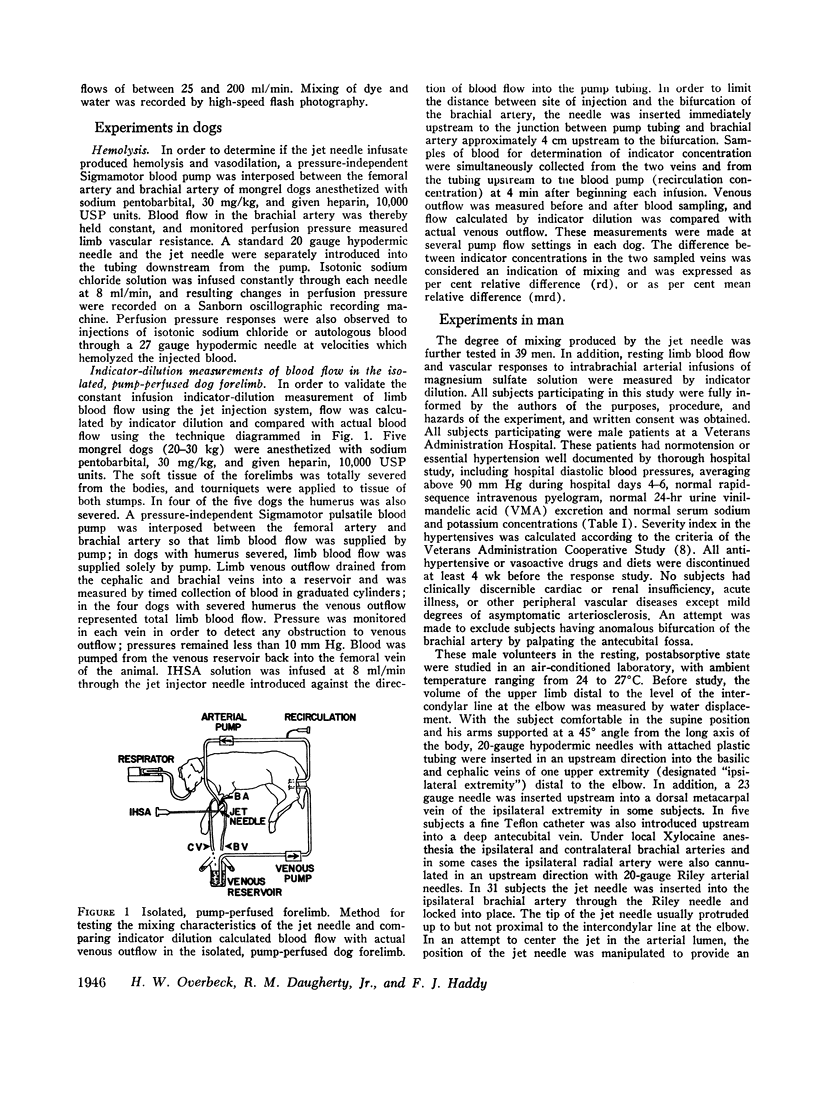
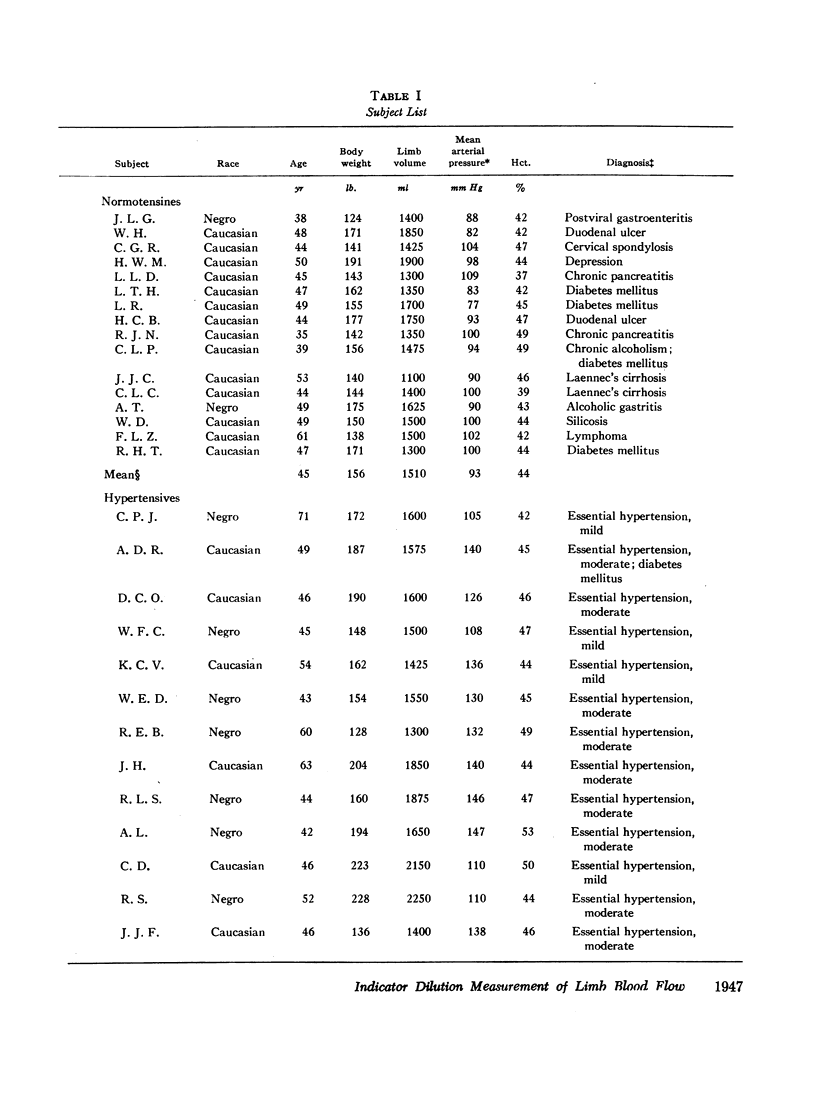
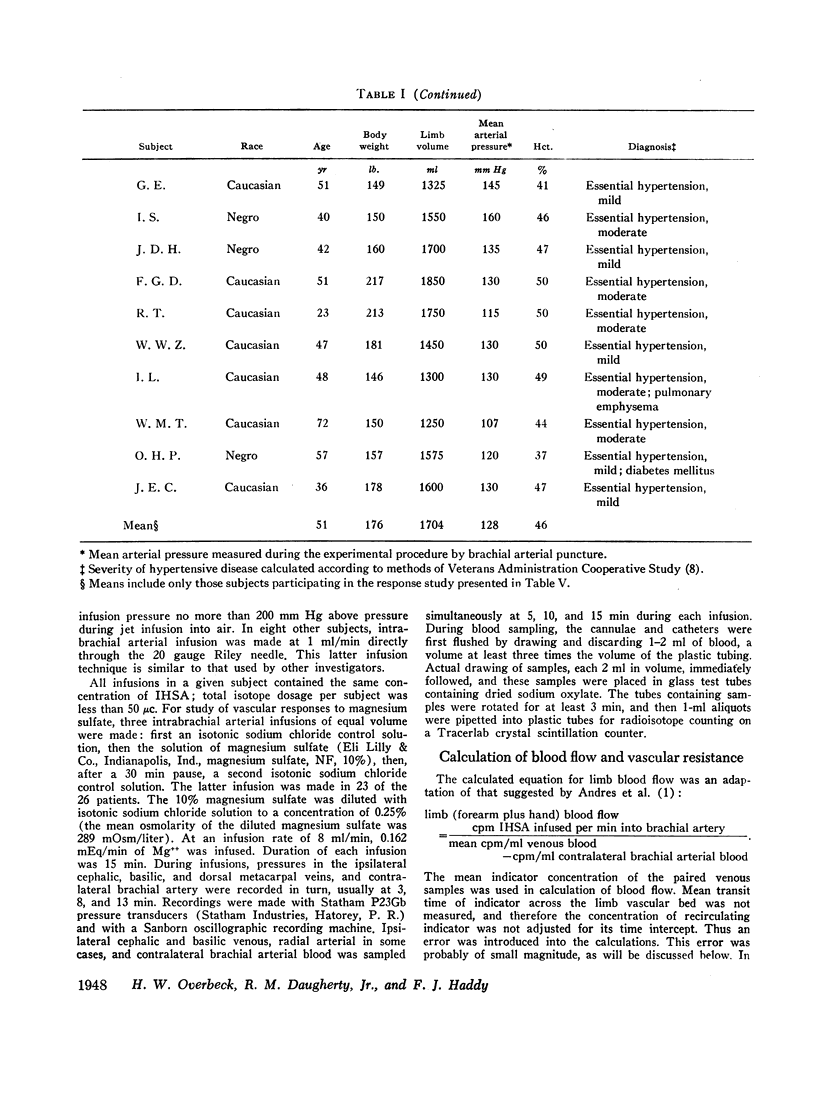
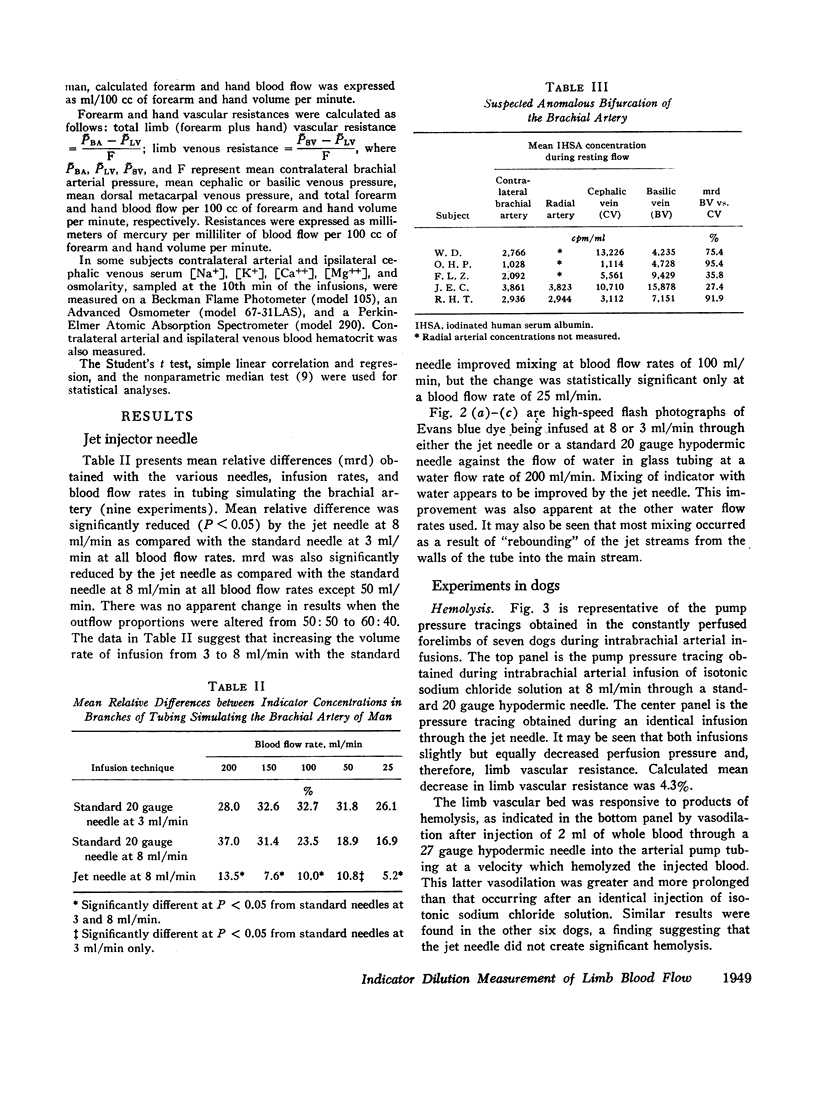
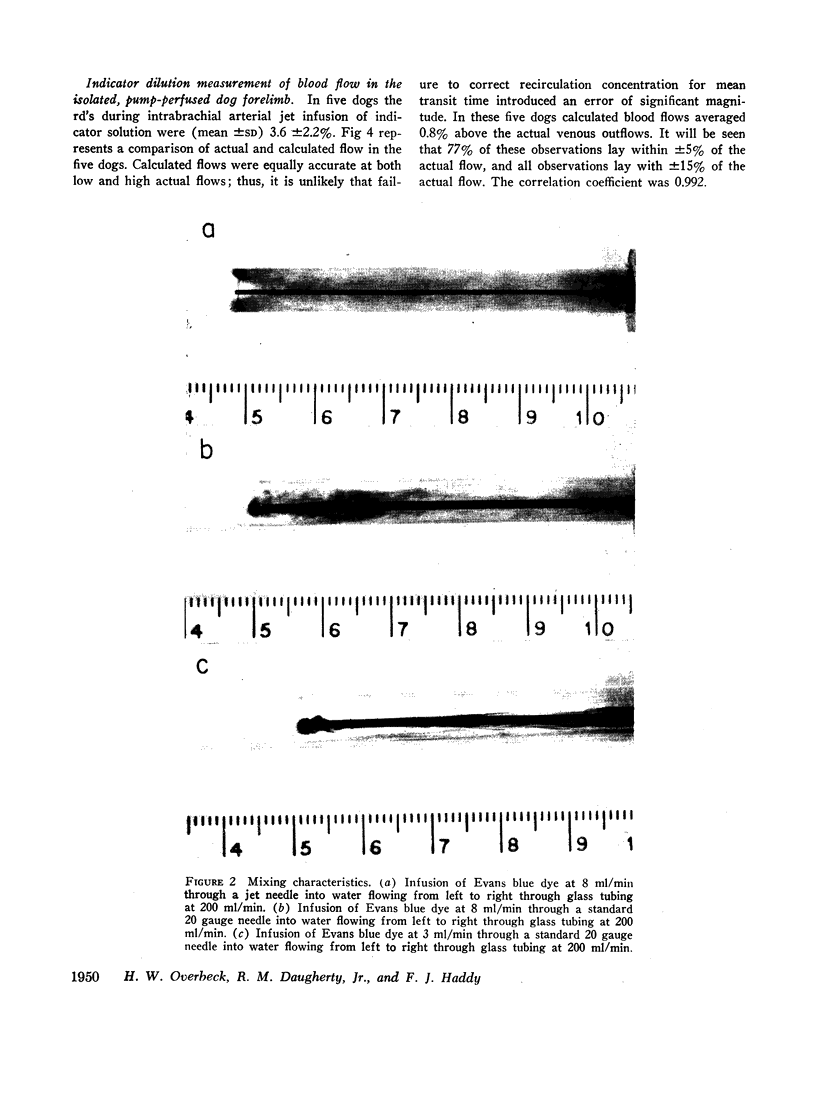
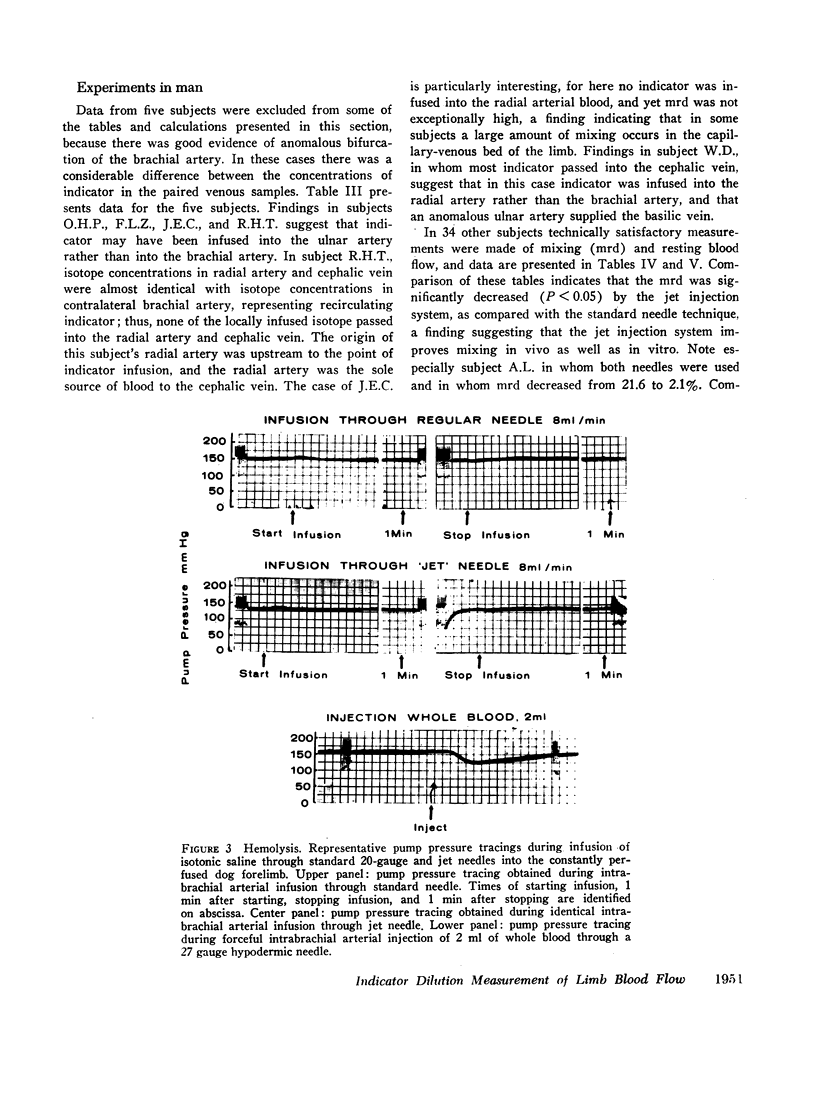
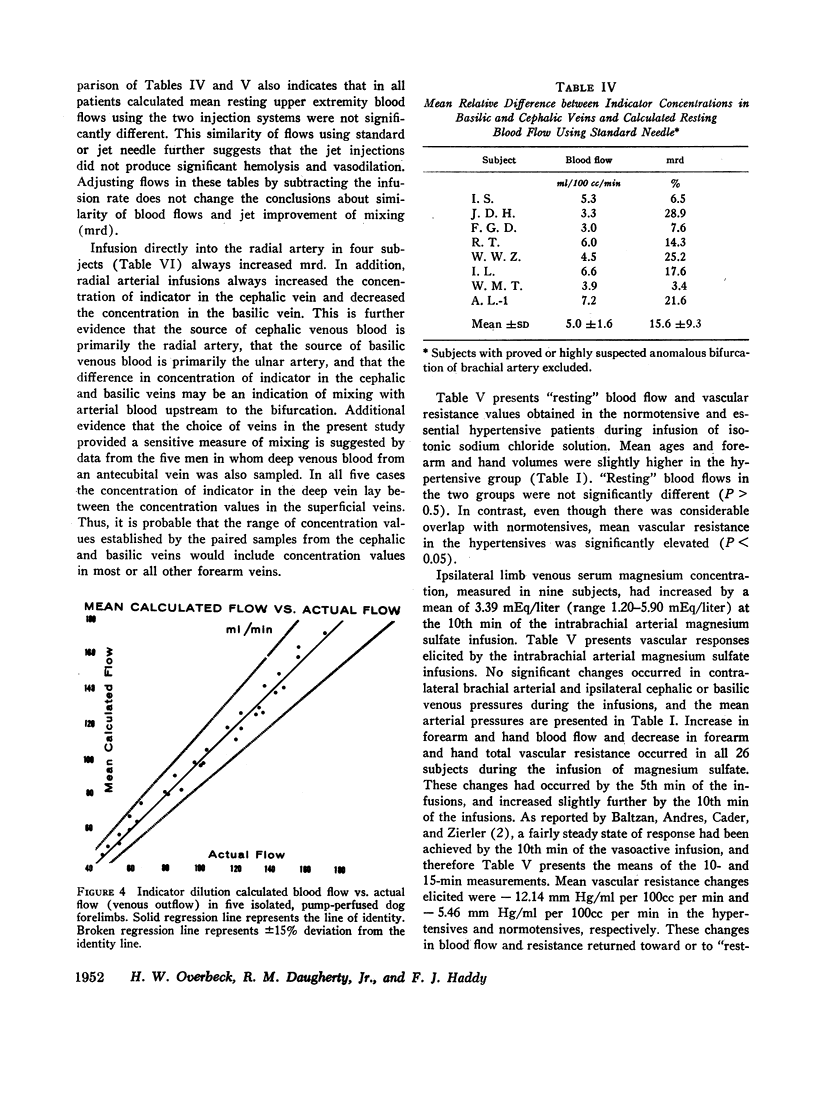
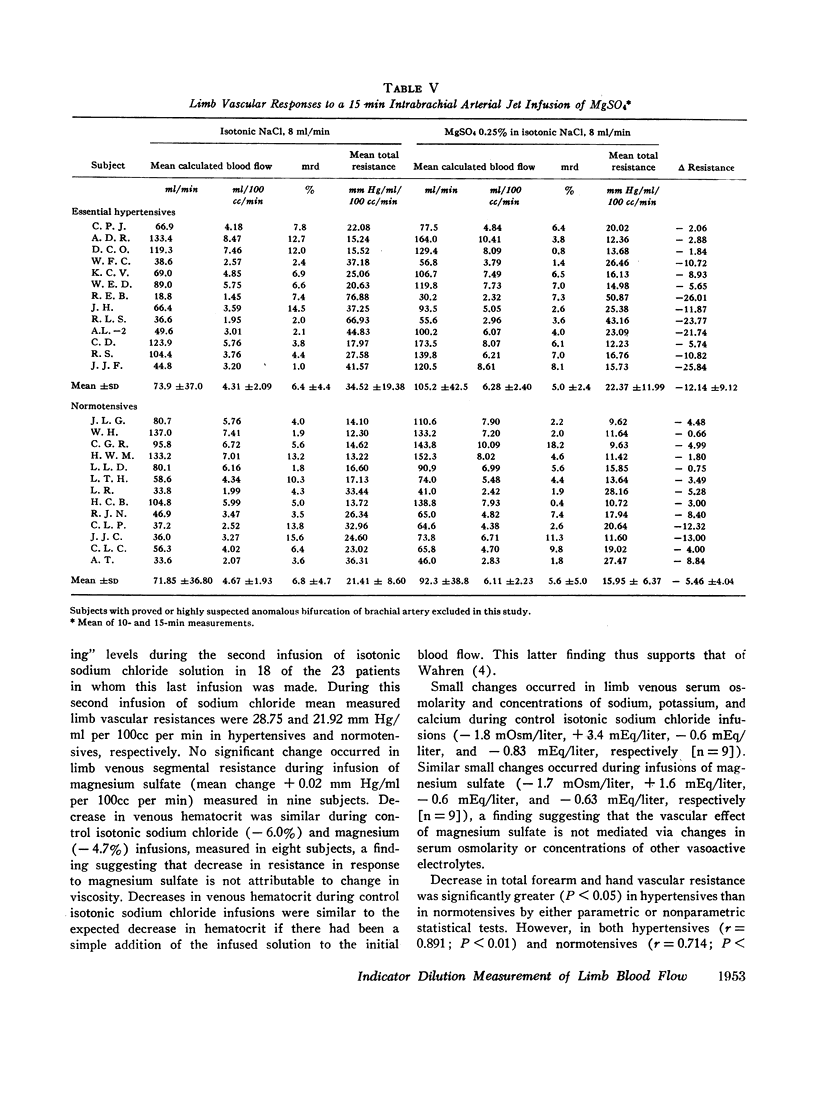
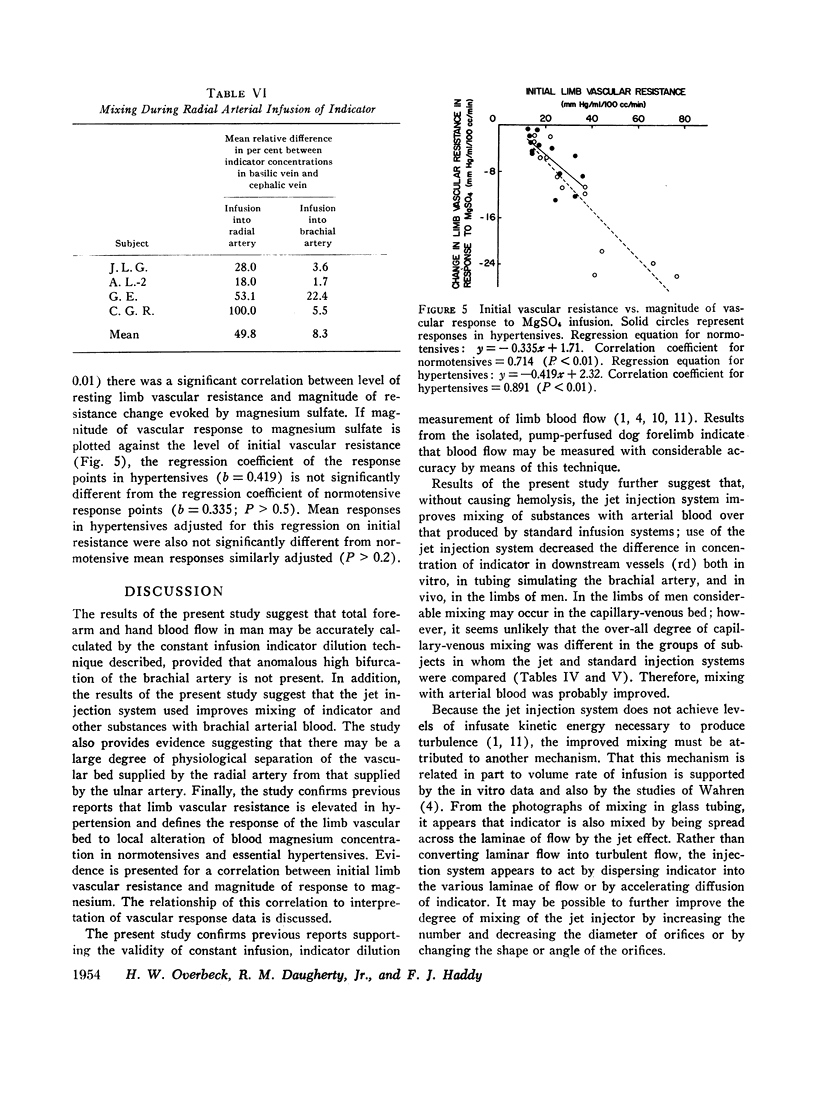
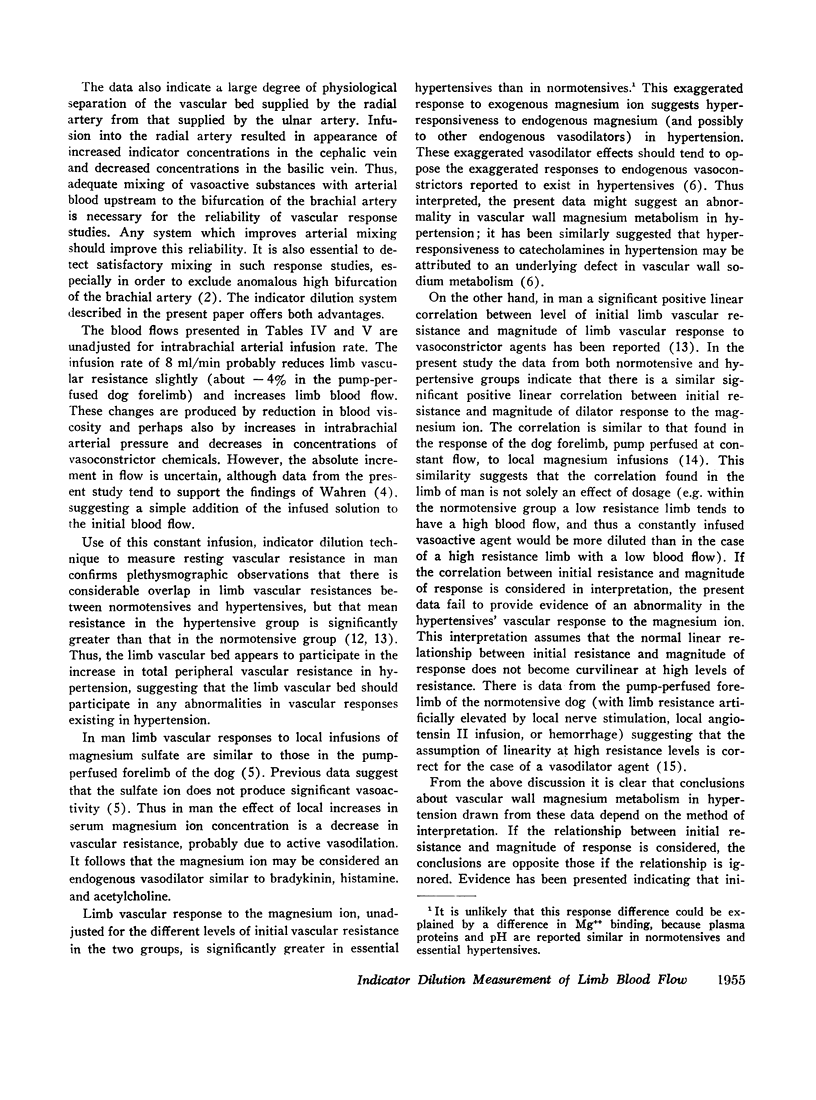

Images in this article
Selected References
These references are in PubMed. This may not be the complete list of references from this article.
- ANDRES R., ZIERLER K. L., ANDERSON H. M., STAINSBY W. N., CADER G., GHRAYYIB A. S., LILIENTHAL J. L., Jr Measurement of blood flow and volume in the forearm of man; with notes on the theory of indicator-dilution and on production of turbulence, hemolysis, and vasodilatation by intra-vascular injection. J Clin Invest. 1954 Apr;33(4):482–504. doi: 10.1172/JCI102919. [DOI] [PMC free article] [PubMed] [Google Scholar]
- BALTZAN M. A., ANDRES R., CADER G., ZIERLER K. L. EFFECTS OF EPINEPHRINE ON FOREARM BLOOD FLOW AND METABOLISM IN MAN. J Clin Invest. 1965 Jan;44:80–92. doi: 10.1172/JCI105130. [DOI] [PMC free article] [PubMed] [Google Scholar]
- CONWAY J. A vascular abnormality in hypertension. A study of blood flow in the forearm. Circulation. 1963 Apr;27(4 Pt 1):520–529. doi: 10.1161/01.cir.27.4.520. [DOI] [PubMed] [Google Scholar]
- Cropp G. J., Burton A. C. Theoretical considerations and model experiments on the validity of indicator dilution methods for measurements of variable flow. Circ Res. 1966 Jan;18(1):26–48. doi: 10.1161/01.res.18.1.26. [DOI] [PubMed] [Google Scholar]
- DOYLE A. E., FRASER J. R. Vascular reactivity in hypertension. Circ Res. 1961 May;9:755–761. doi: 10.1161/01.res.9.3.755. [DOI] [PubMed] [Google Scholar]
- Mendlowitz M., Naftchi N. E., Gitlow S. E., Wolf R. L. Vascular responsiveness in hypertensive and hypotensive states. Geriatrics. 1965 Oct;20(10):797–807. [PubMed] [Google Scholar]
- SELLER R. H., RAMIREZ-MUXO O., BREST A. N., MOYER J. H. MAGNESIUM METABOLISM IN HYPERTENSION. JAMA. 1965 Feb 22;191:654–656. doi: 10.1001/jama.1965.03080080044012. [DOI] [PubMed] [Google Scholar]
- Wahren J. A dye dilution method for the determination of brachial artery blood flow during forearm exercise in man. Acta Physiol Scand. 1965 Aug;64(4):477–478. doi: 10.1111/j.1748-1716.1965.tb04207.x. [DOI] [PubMed] [Google Scholar]
- Walker R. L., Mackay I. F., Van Loon P. Vascular responses to venous congestion. J Appl Physiol. 1967 May;22(5):889–899. doi: 10.1152/jappl.1967.22.5.889. [DOI] [PubMed] [Google Scholar]
- Wuerflein R. D., Smiley R. H., Campbell G. S. Comparison of femoral artery, femoral vein, and total hind limb blood flow in dogs. Am J Surg. 1967 Nov;114(5):653–657. doi: 10.1016/0002-9610(67)90124-9. [DOI] [PubMed] [Google Scholar]



